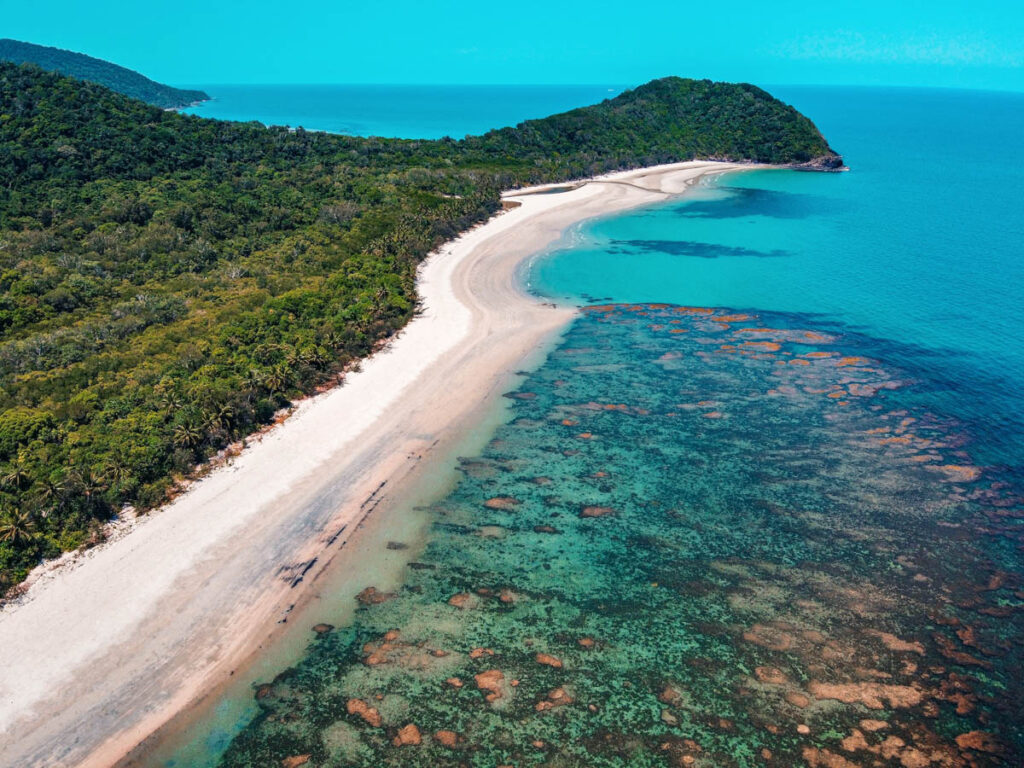The Great Barrier Reef is a world-famous diving destination, with thousands of individual reefs. From the pristine outer reefs to the world-famous Yongala wreck, there’s no shortage of spectacular sights to explore here. For divers thinking about visiting the Great Barrier Reef for the first time, it can feel overwhelming trying to decide where to go and what to see. This guide will help you navigate the incredible diversity of dive sites, the best times to visit, where to base yourself, and how to make the most of your trip to this iconic dive area.
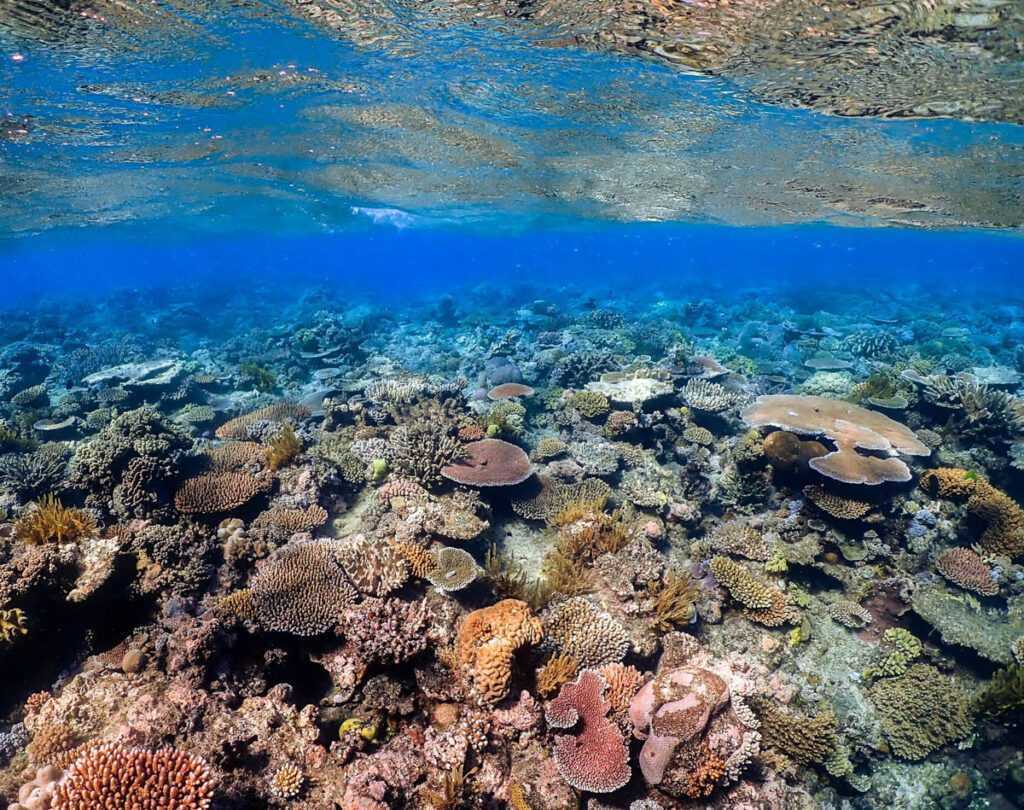
Photo by Kristin Hoel on Unsplash
Diving the Great Barrier Reef
The Great Barrier Reef is the largest coral reef system in the world, stretching over 2,300 kilometers along the northeast coast of Australia. This UNESCO World Heritage Area includes over 2,900 individual reefs and 900 islands, each offering unique underwater landscapes and marine life.
Whether you’re a new diver or a seasoned pro, there’s something for everyone at this world-famous dive destination. But with so many reefs to choose from, it can be tricky knowing where to go diving at the Great Barrier Reef.
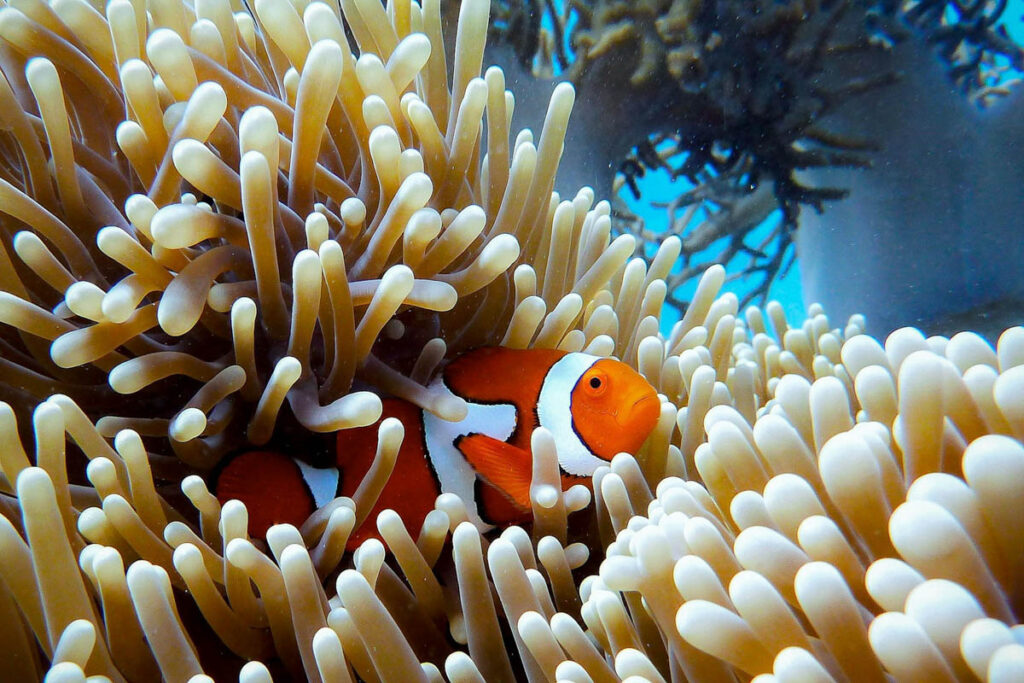
Photo by Giorgia Doglioni on Unsplash
Here are some of the main highlights to choose from:
Bougainville Reef
Located in the far northern Great Barrier Reef, Bougainville Reef is a remote and relatively untouched dive area. The reef features dramatic walls, large pelagic species, and incredible coral formations. It’s a favorite for liveaboard trips due to its remoteness.
Osprey Reef
This submerged atoll is known for its sheer walls and thrilling shark dives and is a popular dive spot. Osprey Reef is home to grey reef sharks, whitetip sharks, and occasional hammerheads, plus schools of trevally and other pelagics.
Raine Island
Raine Island is the world’s largest green sea turtle nesting site, and each nesting season, it hosts an impressive number of turtles. It’s estimated that 30,000 to 60,000 female green sea turtles come to Raine Island annually to nest.
The reef surrounding the island is home to vibrant corals, and if you time your visit during nesting season, you’ll witness hundreds of turtles on the beaches and in the water. Witnessing the nesting and hatching of these turtles at Raine Island is an incredible experience.
Shark Diving
The Great Barrier Reef offers world-class shark diving opportunities. Shark Reef, for example, attracts large numbers of reef sharks, while Cod Hole (near Ribbon Reef) allows divers to interact with massive potato cods, which sometimes attract larger predators.
Wreck Diving
The SS Yongala is one of the most iconic wrecks in the Great Barrier Reef. This historic wreck is located near Townsville and is considered one of the best wreck dives in the world. The Yongala is home to a huge variety of marine life, including barracuda, sea snakes, giant groupers, and even bull sharks. The combination of history and marine diversity makes this wreck a must-visit.
The Ribbon Reefs
Stretching along the outer reef, the Ribbon Reefs offer some of the best dive sites in the Great Barrier Reef. Famous for sites like Steve’s Bommie and Cod Hole, the Ribbon Reefs are known for their biodiversity and clear waters. Here, you’ll encounter everything from tiny nudibranchs to large pelagic species.
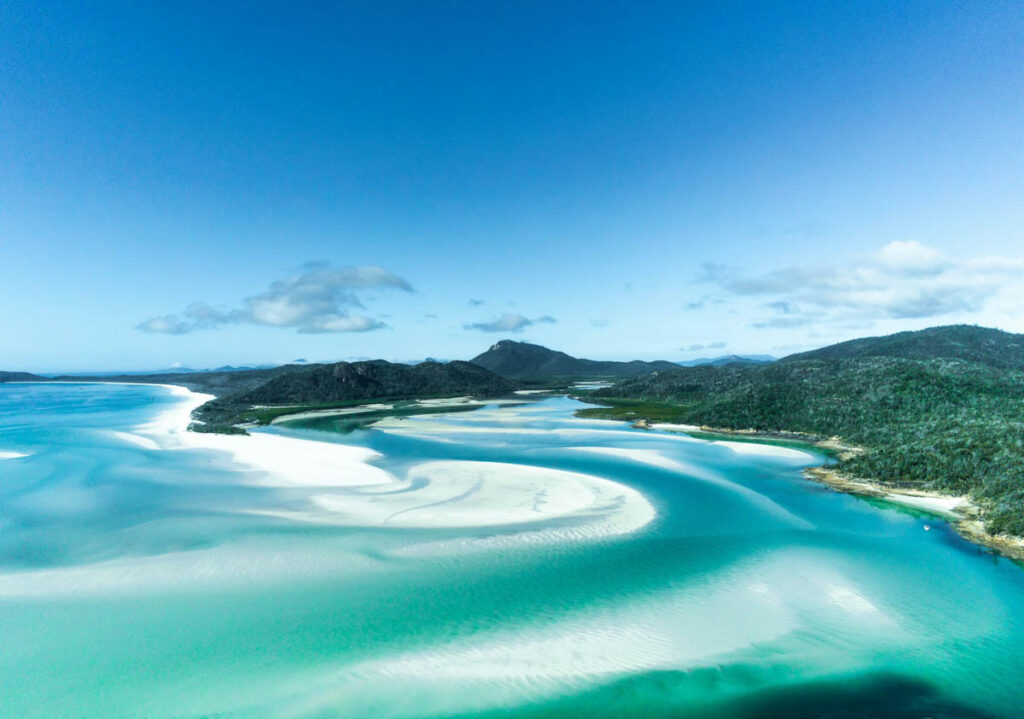
Photo by Guillaume Marques on Unsplash
Best Time to Dive the Great Barrier Reef
The GBR is a year-round diving destination, but the conditions vary throughout the seasons. The average summer water temperatures (December to February) are 27-30°C (81-86°F), whilst winter (June to August) has cooler waters around 23-26°C (73-79°F).
The best water visibility is during the winter months, especially in the outer reefs, ranging from 15-40 meters (50-130 feet). During summer, visibility can drop due to plankton blooms and increased rainfall.
Winter offers cooler water, lower humidity, and clearer conditions, making it the ideal time for diving. Summer brings warmer water and marine life activity, but also more unpredictable weather, including the possibility of storms.
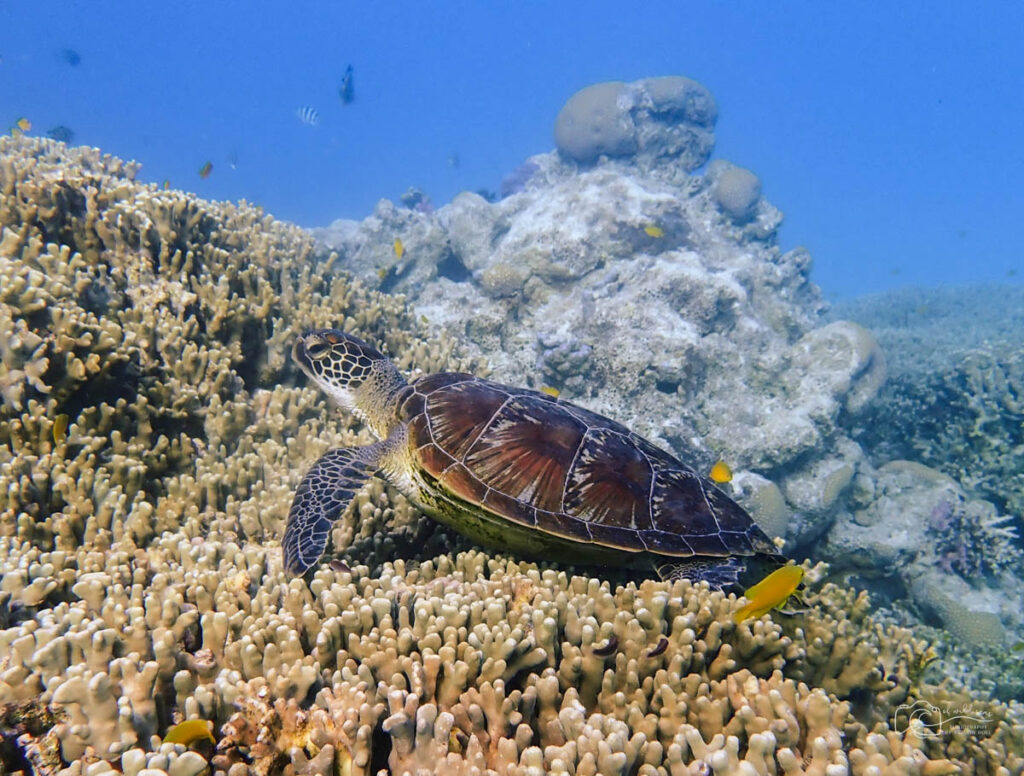
Photo by Kristin Hoel on Unsplash
Seasonal Marine Highlights
There are some incredible seasonal marine life highlights to be aware of and plan your dive trip around:
- Sea Turtle Nesting (Raine Island): November to March. Green turtles come ashore to nest, especially around Raine Island.
- Coral Spawning: Occurs after the full moon in November or December. This spectacular event happens across various reefs.
- Manta Ray Season: May to October, particularly around Lady Elliot Island.
- Whale Season: June to November. Humpback and dwarf minke whales migrate through the Great Barrier Reef, especially near the Ribbon Reefs and Osprey Reef.
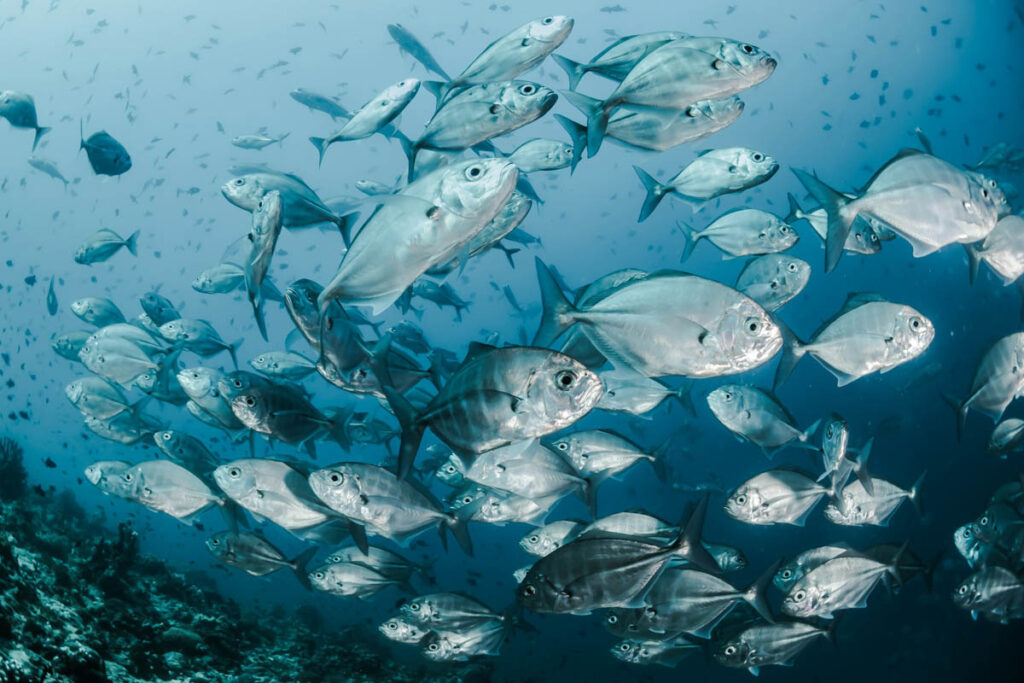
Dive Experience Needed
The Great Barrier Reef caters to all levels of divers and also snorkelers. Most dive operators offer trips for both beginners and advanced divers.
- The inner reefs (close to shore) are shallow and protected, with calm waters perfect for Open Water Divers.
- The outer reefs and remote dive sites, like Osprey Reef, Bougainville Reef, and the Yongala wreck, are better suited for more experienced divers. These sites often feature stronger currents, deeper dives, and bigger marine life encounters.
If you want to explore the more challenging dive sites, it’s a good idea to complete your deep diving, drift diving, and wreck diving specialties before you visit. If you’re nervous about boat diving or sharks, you might also find a boat diving and Shark Ecology diver specialty helpful.
Diving The Great Barrier Reef – Day Boat or Liveaboard?
There are two main ways to dive the Great Barrier Reef: day boats and liveaboards.
Day Boats:
These trips are perfect for those who want to dive close to shore. Departing from Cairns, Port Douglas, and Airlie Beach, day boats typically visit the inner reefs and offer 2-3 dives per day. While convenient, they limit access to the more remote dive sites. Day boats are ideal for beginners or those short on time.
Liveaboards:
For divers wanting a more immersive experience, liveaboards are the best way to explore the outer reefs and more remote sites. These trips usually last 3-7 days and offer the opportunity to dive multiple times a day at diverse locations, including Bougainville Reef, Osprey Reef, and the Ribbon Reefs. Liveaboards are ideal for experienced divers who want to maximize their time on the reef and see the best sites. Some specialist liveaboards offer seasonal trips to Raine Island and to swim with dwarf minke whales.
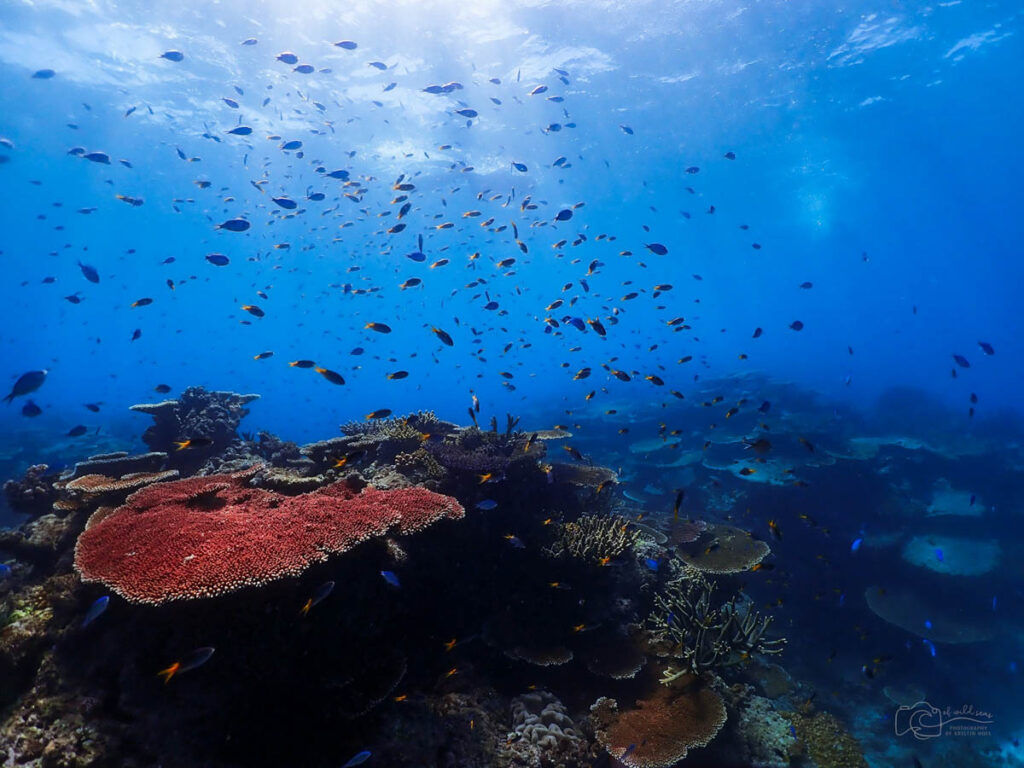
Photo by Kristin Hoel on Unsplash
Where to Base Yourself
The Great Barrier Reef spans a huge area, and there are multiple entry points along the coast. Each location offers a different experience, both above and below water, so make sure you choose a destination that meets your dive group’s needs.
Cairns
Cairns is the most popular starting point for diving the Great Barrier Reef and is home to numerous dive operators offering both day trips and liveaboards. Cairns also boasts a vibrant city life with plenty of restaurants, bars, and shops to explore when you’re not diving. Just north of Cairns, you can explore the oldest rainforest in the world, the Daintree, meet huge saltwater crocodiles, and take a road trip up to stunning Cape Tribulation.
Port Douglas
Located just north of Cairns, Port Douglas is a smaller, more relaxed town but still offers access to some of the best diving in the Great Barrier Reef. The outer reefs and the Ribbon Reefs are often accessed from here, and the town itself offers beautiful beaches and a more relaxed atmosphere.
Airlie Beach and the Whitsundays
Known for its stunning scenery, the Whitsunday Islands offer a tranquil dive experience. While the reefs here are closer to shore and less pristine than the outer reefs, the islands are ideal for combining diving with other activities like sailing, hiking, and snorkeling.
Lady Elliot Island
Located at the southern end of the Great Barrier Reef, Lady Elliot Island is known for its manta ray population (including a rare pink manta ray) and excellent coral gardens. It’s one of the few locations where you can dive straight from the beach, making it ideal for shore dives and an idyllic island getaway.
Townsville
This coastal city is the main access point for diving the famous Yongala wreck. Townsville is a quieter alternative to Cairns and is ideal for wreck divers. You could easily spend a few days diving this magnificent wreck.
Brisbane and Gold Coast
These southern locations are more distant from the reef itself but can offer access to dive sites via short domestic flights to closer towns like Cairns or Townsville. Both Brisbane and Gold Coast are better known for their local dive sites and marine parks rather than direct Great Barrier Reef access.



